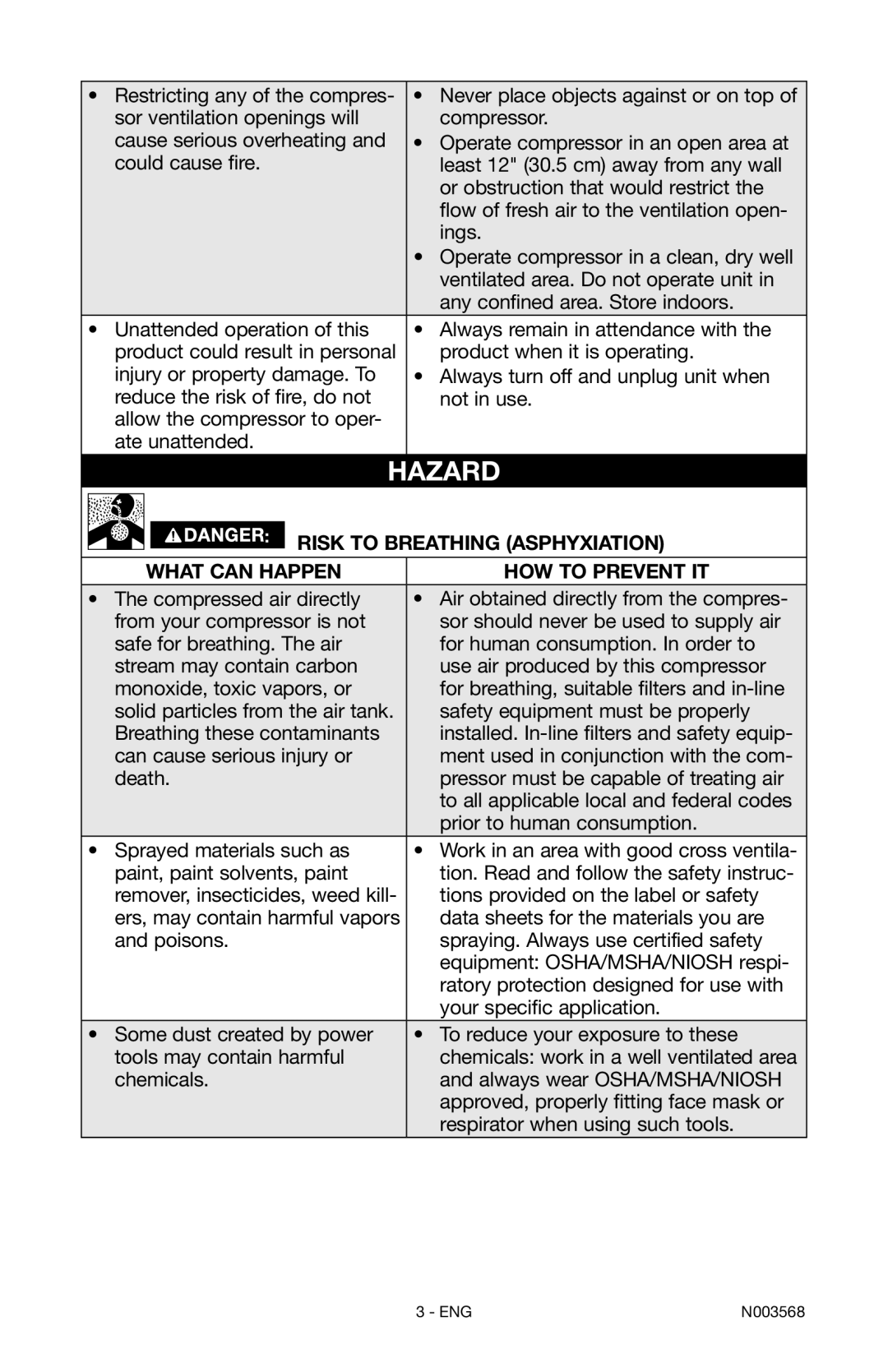
| • Restricting any of the compres- | • Never place objects against or on top of | |||
| sor ventilation openings will | compressor. | |||
| cause serious overheating and | • Operate compressor in an open area at | |||
| could cause fire. | least 12" (30.5 cm) away from any wall | |||
|
|
|
|
| or obstruction that would restrict the |
|
|
|
|
| flow of fresh air to the ventilation open- |
|
|
|
|
| ings. |
|
|
|
|
| • Operate compressor in a clean, dry well |
|
|
|
|
| ventilated area. Do not operate unit in |
|
|
|
|
| any confined area. Store indoors. |
| • Unattended operation of this | • Always remain in attendance with the | |||
| product could result in personal | product when it is operating. | |||
| injury or property damage. To | • Always turn off and unplug unit when | |||
| reduce the risk of fire, do not | not in use. | |||
| allow the compressor to oper- |
| |||
| ate unattended. |
| |||
|
|
|
|
| HAZARD |
|
|
|
| RISK TO BREATHING (Asphyxiation) | |
|
|
|
| ||
|
|
|
| ||
|
|
|
|
|
|
|
| What can happen | How to prevent it | ||
| • The compressed air directly | • Air obtained directly from the compres- | |||
| from your compressor is not | sor should never be used to supply air | |||
| safe for breathing. The air | for human consumption. In order to | |||
| stream may contain carbon | use air produced by this compressor | |||
| monoxide, toxic vapors, or | for breathing, suitable filters and | |||
| solid particles from the air tank. | safety equipment must be properly | |||
| Breathing these contaminants | installed. | |||
| can cause serious injury or | ment used in conjunction with the com- | |||
| death. | pressor must be capable of treating air | |||
|
|
|
|
| to all applicable local and federal codes |
|
|
|
|
| prior to human consumption. |
| • Sprayed materials such as | • Work in an area with good cross ventila- | |||
| paint, paint solvents, paint | tion. Read and follow the safety instruc- | |||
| remover, insecticides, weed kill- | tions provided on the label or safety | |||
| ers, may contain harmful vapors | data sheets for the materials you are | |||
| and poisons. | spraying. Always use certified safety | |||
|
|
|
|
| equipment: OSHA/MSHA/NIOSH respi- |
|
|
|
|
| ratory protection designed for use with |
|
|
|
|
| your specific application. |
| • Some dust created by power | • To reduce your exposure to these | |||
| tools may contain harmful | chemicals: work in a well ventilated area | |||
| chemicals. | and always wear OSHA/MSHA/NIOSH | |||
|
|
|
|
| approved, properly fitting face mask or |
|
|
|
|
| respirator when using such tools. |
3 - ENG | N003568 |
